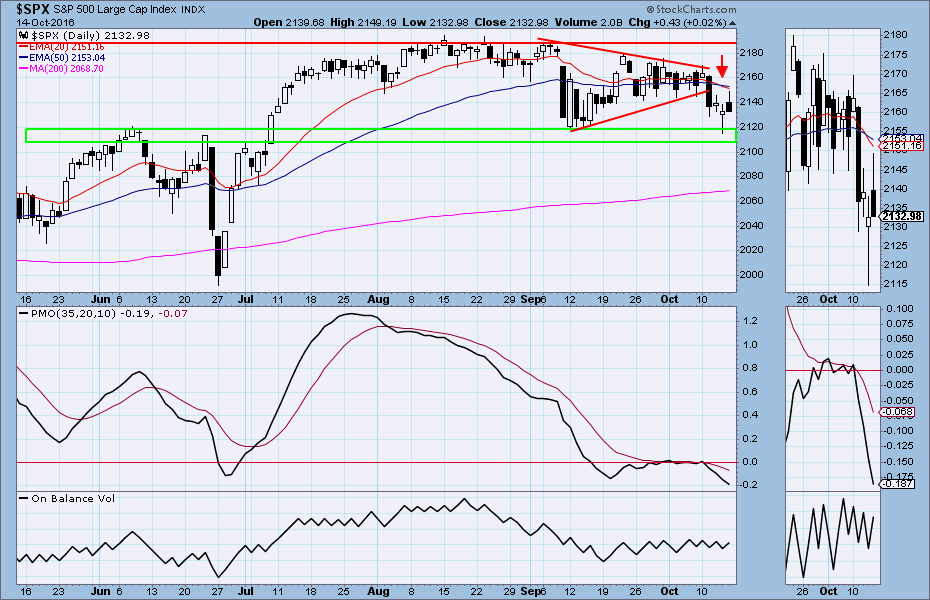The S&P 500 cash index (SPX), the index of large-cap US equities, closed at2141.16 last Friday, up 8.18 points for a week, that saw lots of whipsaw movements, but no real progress.
The large caps have been stalling since the middle of July in a long range-bound area between 2120 and 2190. Last week’s trading challenged the lower boundary of that range for a while, but closed just a bit below the middle of the range.
This market is a classic example of pre-election paralysis. The people who could move the market out of this range are either unwilling to do anything to disrupt their preferred candidate, or frightened of the consequences when the market wakes up again.
So we skitter back and forth across the same price levels on low volume, waiting for something to happen to give the market direction. This could easily continue until the first week in November.
The intermediate and long term outlook is bullish; the short term is decidedly bearish. The result is a market sitting on its hands, with no direction home, to paraphrase America’s latest Nobel Prize winner.
November to January are historically the best three months of the year for US equities, and we expect some kind of rally into the New Year. But there is a lot to worry about with the market at this level – for example the continuing decline in US equity mutual funds, which have heading steadily down for a year.
Markets alternate periods of consolidation with periods of expansion when prices break out – or break down – from established price ranges into new territory. At this stage we can only guess about the direction that range break-out will take but we doubt there will be any major moves until after the election.
If there are, they are likely to be massive. The longer we wait, the bigger the move. And we’ve been waiting a long time.
This week
The week will be busy. Four Fed members will speak on Monday and lots of key economic reports will be released during the week, especially the GDP report coming on Friday. The end-of-month window dressing could help hold the index from falling below September’s low.
The intermediate-term overbought condition remains. We had a short-term oversold bounce last week bit it didn’t change the direction of the weekly PMO and STO indicators, which continue pointing down.
There are many things that can affect the natural price movement this week. The most important and least discussed are the large option positions being held, and the price swings on option expiration days, which are becoming more numerous. Be careful.
2150-55 will be a key zone for this week. Staying below this level may induce the Index to retest the support zone at 2120-10 again.
Today
For the S&P500 mini futures (ES):
The ES continued to hold the price under 2141, the ultra-short-term broken support line.
Today ES is likely to retest last Friday’s high at 2138.50 or higher up to last week’s high area 2144.50 if overnight trading holds above 2123 (last Friday’s low).
The multiple speeches by Fed members will affect the price movement this week.
2130.50 will be a control line. Holding above it could push the price up to 2138.50-39.50 or higher up to 2147-45.
A failure to hold above it could lead price to drop into 2123-25 for testing. But 2123-20 could hold ES up today.
Major support levels: 2116-14.50, 2106.50-07.50, 2100.50-2098.50, 2089-88
Major resistance levels: 2162-64, 2171-72.50, 2181.50-78.50 , 2188-90.50
For more free market analysis visit www.naturus.com.





